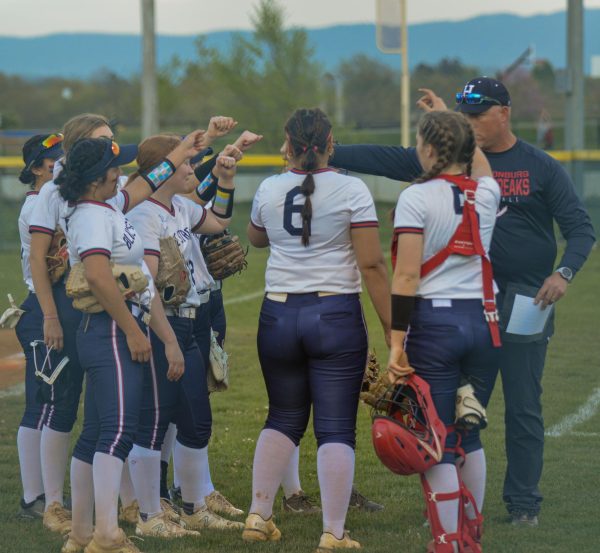Color Guard deserves more credit
A color guard member twirls a flag before performing at the City County Showcase at Broadway High School.
A marching band strides down the street during a parade, all in perfect little lines, moving in unison. Behind them follows the color guard. You’ve seen them. The “flag twirlers.” They whip their flags around so gracefully and seemingly without effort. However, the sheer number of hours that went into whipping those flags around- tossing and spinning them is far more than what you may have initially imagined.
The color guard puts in more time than the band does, and, in fact, have an extra week of work during the summer to get their tosses nailed. The actual marching band only has one week of intense marching, whereas guard has two. On the field, and in the band’s show, each and every guard member has a dot book, a small journal with places a particular person needs to be at a given time, just as the band does. Not only do they need to learn over 60 positions for each show, they also need to learn visuals for their spins and tosses, as well as what prop to use when. The props vary depending on the show, but there are usually at least two flags and a rifle for each show.
Not only do they have to make sure all their dots are nailed, they also need to have their visuals- such as tosses, spins and anything else locked and ready to go. If two saxes mess up a note, it’s unlikely you’ll notice since there are so many other people playing different things. However, if a guard member doesn’t catch a toss, you’ll probably notice that way more easily.
The band also has a very difficult job, but few people even know the name of the color guard, and it’s just called “flag twirling.” But perhaps, the next time you see a parade, or a band’s competition show, you’ll appreciate what color guard does just a little bit more.













